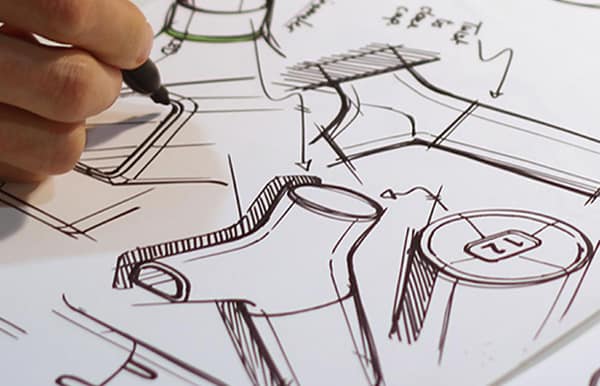You often conjure images of groundbreaking technology or cutting-edge software when you think of innovation. However, there’s an unsung hero behind many of the products that shape your lives. In this article, you’ll delve into the fascinating world of industrial design and uncover its pivotal role in driving product innovation.
The Backbone of Innovation: Aesthetics and Functionality
Industrial design, sometimes known as product design, involves the skill of blending aesthetics and functionality to create products that look good and work seamlessly. The marriage of form and function sets the stage for innovation. Here’s how:
Enhancing User Experience
Imagine using a smartphone with sharp edges and a clunky interface. Now, picture holding a sleek, ergonomic device with a user-friendly interface. The latter is a result of meticulous ergonomics. By understanding user needs and behaviours, designers craft products that enhance the user experience, ultimately driving innovation.
Fostering Emotional Connections
Think about the products you love – they likely evoke an emotional response. The designers harness psychology and aesthetics to create products that resonate with consumers more deeply. From an automobile’s graceful curves to a premium smartphone’s tactile feel, these emotional connections are at the heart of innovation.
Innovation Beyond Aesthetics
While aesthetics plays a significant role, ergonomics goes beyond just making things look good. It’s about making them work better, smarter, and more sustainably.
Functionality and Ergonomics
Consider the design of a modern chair. An expert designer not only focuses on its appearance but also on ergonomics. A well-designed chair should support the body, ensuring comfort and posture. Such considerations lead to innovative designs that enhance your daily lives.
Sustainable Solutions
In an era of environmental consciousness, they are at the forefront of sustainable innovation. They strive to create products that use fewer resources, reduce waste, and have minimal environmental impact. From recyclable packaging to energy-efficient appliances, ergonomics is shaping a greener future.
Collaborative Innovation
Innovation is rarely a solo act; it’s a collaborative effort that involves multiple disciplines. They act as catalysts, bridging the gap between engineering, marketing, and manufacturing.
Bridging the Gap
Imagine a product that’s technically brilliant but needs to resonate with consumers. They work closely with engineers to ensure that products are functional and desirable. This collaborative approach leads to innovative solutions that tick all the boxes.
Market-Centric Design
These designers are the voice of the market within a product development team. They perform market research to grasp consumer preferences and trends, allowing companies to remain at the forefront. This market-centric approach is essential for innovation that meets real-world needs.
Medical Innovations
In the field of healthcare, they have contributed to life-saving innovations. Their impact is profound, from ergonomic medical equipment that enhances patient comfort to user-friendly interfaces in medical devices.
Accessibility and Inclusion
Inclusive design is a key focus of professional designers. They strive to create products that cater to people of all abilities, making the world more accessible. Innovations like ergonomic wheelchair designs and user-friendly smartphone interfaces exemplify this commitment to inclusivity.
The Future of User-Centred Design in Innovation
As technology advances and consumer expectations evolve, user-centred design remains a driving force behind innovation. Its ability to bridge the gap between form and function, aesthetics and usability, and sustainability and desirability positions it as an indispensable component of the innovation eco.
In conclusion, industrial design is the unsung hero of product innovation. The discipline transforms ideas into tangible, user-friendly, and emotionally resonant products. Whether enhancing user experience, fostering sustainability, or driving market-centric solutions, industrial design plays a pivotal role in shaping the products that define your lives. So, the next time you interact with a beautifully designed product, remember the invisible hand of ergonomics that made it possible.

